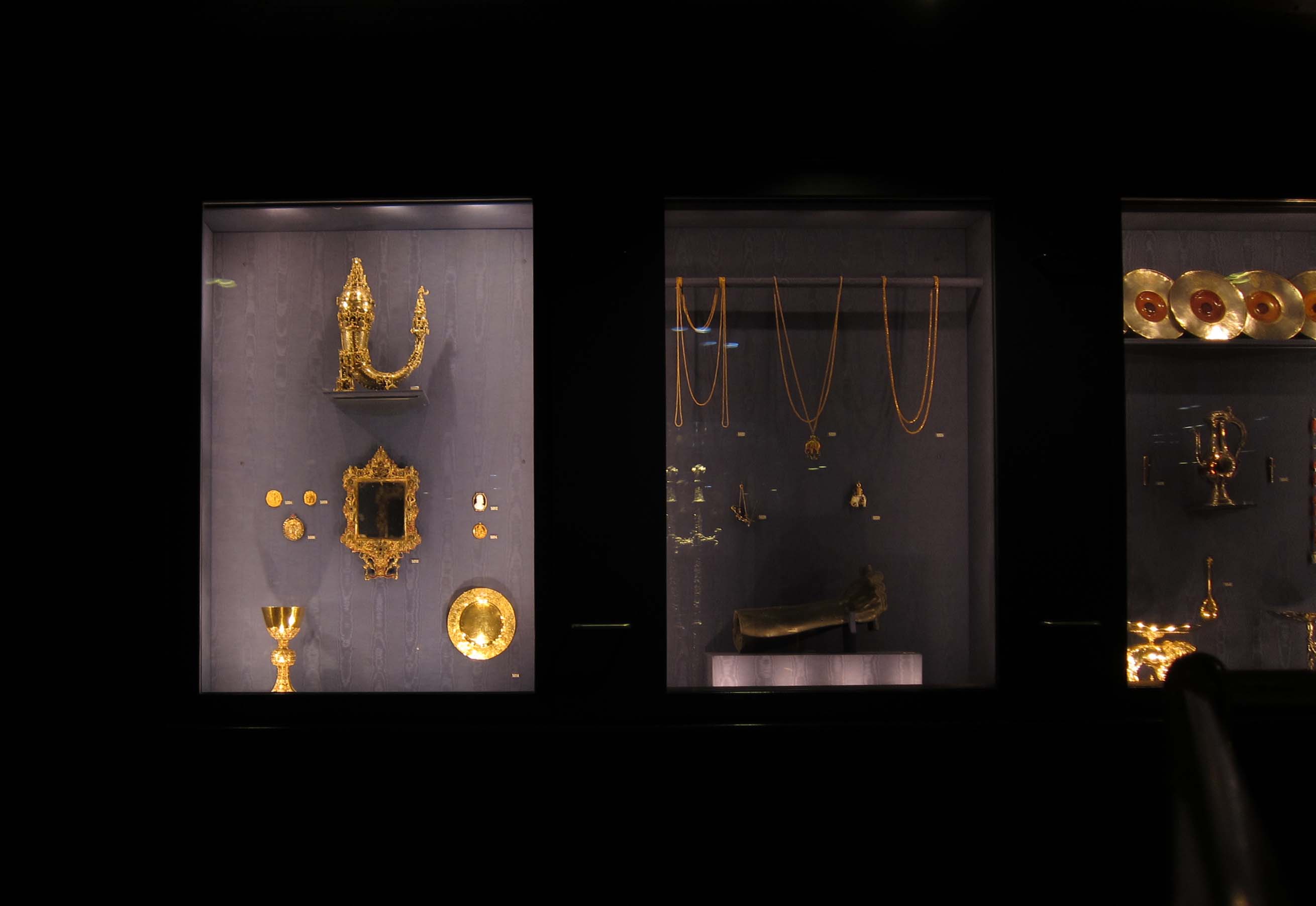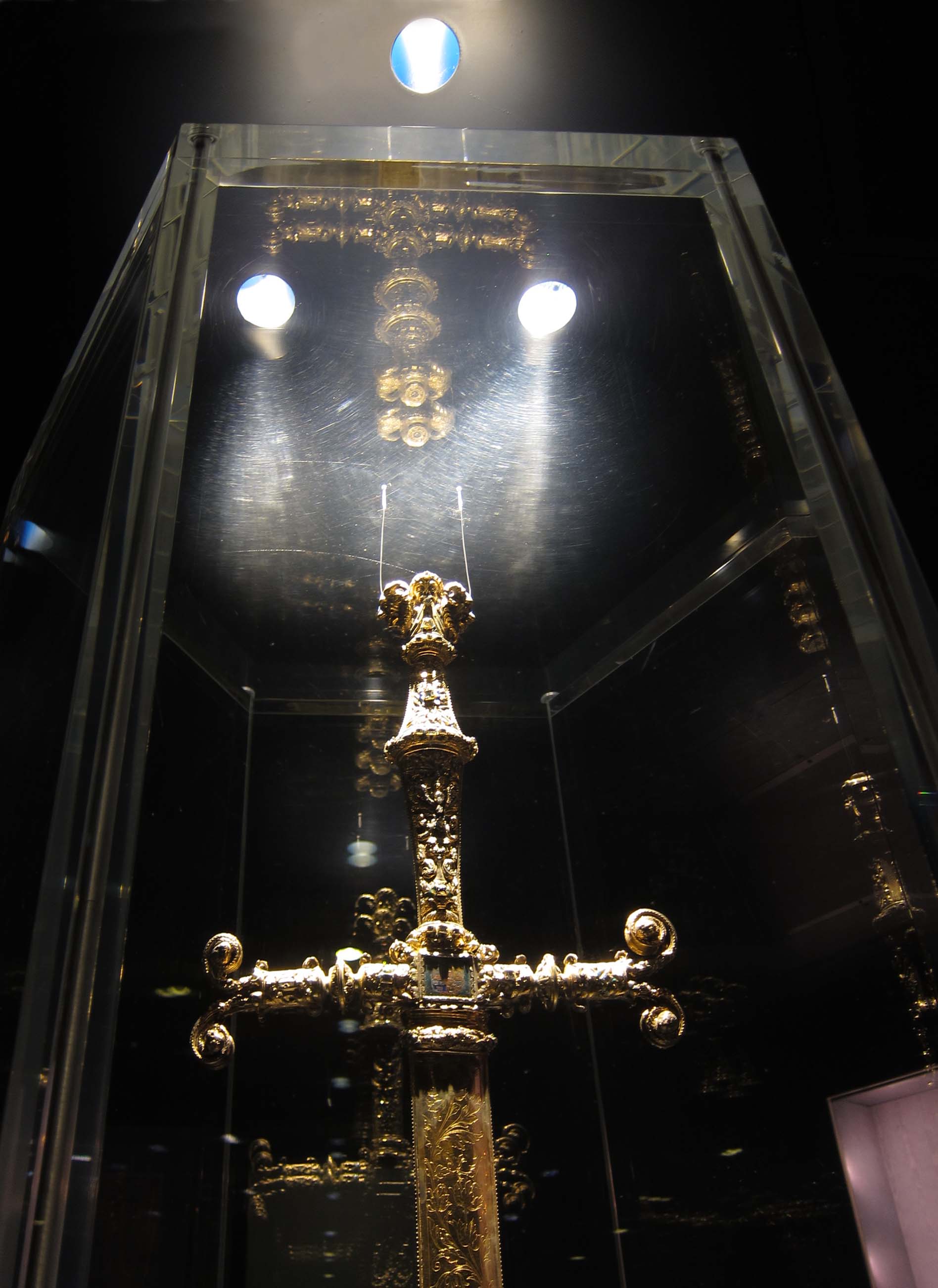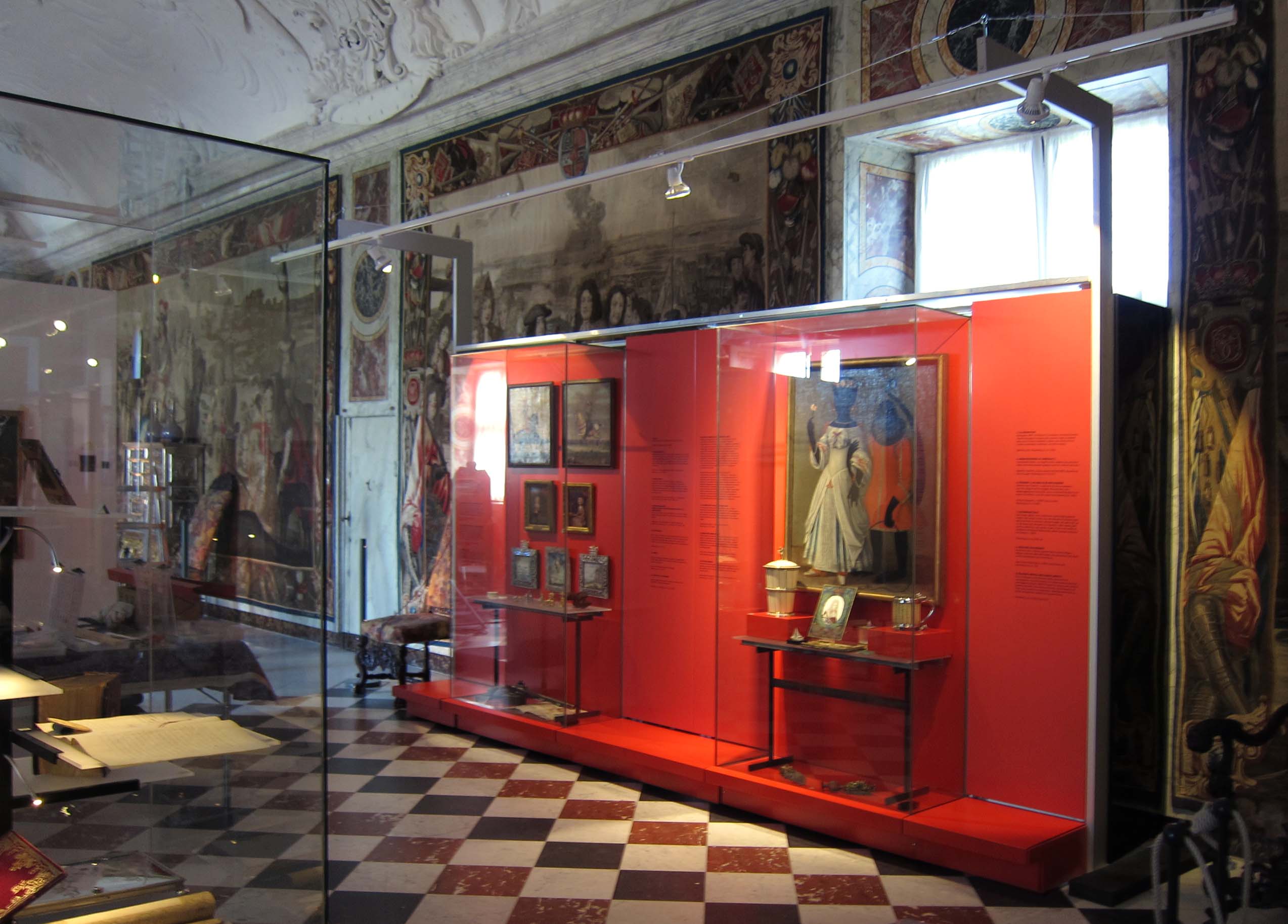Why is it so dark in Rosenborg?
Light is good for many purposes. Plants cannot grow without it and people’s moods darken when they don’t get enough of it.
Historical objects, on the other hand, do not thrive in light. Some materials are broken down rapidly in light – e.g. textiles and paper – while in the case of others the damage happens more slowly. All materials become degraded quite naturally, but light assists in speeding up this process.
A museum that collects and displays old objects has to think about preserving those objects for as long as possible. In Rosenborg, which is a very old museum where very old objects of fragile materials are displayed, it is extremely important to ensure that the objects are not exposed to conditions that we know would damage them.
The damaging effect of light occurs both in daylight and in electric light – in the ultra-violet and infrared rays of light. The ultra-violet rays of light bleach colours, and the infrared rays, which are hot, accelerate the natural physical process of degradation which is inherent in all materials.
In Rosenborg for a number of years we have therefore carried out research into developing the best source of lighting for use in displays. This lighting has to meet several requirements:
- The lighting must not give off large amounts of heat.
- The lighting must not be too strong, i.e. give off too many damaging uv-rays.
- The lighting must have a pleasing colour, so that the colours of the objects displayed look attractive.
- The lighting must have a low energy consumption.
In cooperation with the Danish Technical University, commercial firms and energy companies, the Museum’s Chief Conservator, Hazze Nystrøm, has developed a form of LED lighting in which the colour of the light can be controlled so that displayed objects can look their best and at the same time be exposed to as few of the damaging rays from light as possible. The new lighting is also very economical in use of energy.

Three of the showcases in the Treasury. The two cases on the right still have the old lighting with small filament bulbs, while the case on the left has the new filtered white LED lighting.
In the period autumn 2010 – spring 2011 the lighting in the showcases in the Treasury was replaced with the new lighting. The colours of the golden objects are shown off to full advantage by the new lighting, which is also effective in highlighting the fine colour of the blue silk against which they are displayed. In the cases that still have the old lighting the blue colour looks greyer and more boring, and the golden objects are left in darkness. In the new lighting the amount of energy that is available is better used and the showcases are lit in such a way that the objects can more clearly be seen.
 LED lighting has also been used in the large central showcases in the Treasury.
LED lighting has also been used in the large central showcases in the Treasury.
The new LED lighting will also be used for special exhibitions. This is from the temporary exhibition “Pomp and Splendour”, which was mounted in the Great Hall in the winter of 2010/11.
 From the exhibition “Pomp and Splendour”
From the exhibition “Pomp and Splendour”

 Dansk
Dansk
 English
English
 Deutsch
Deutsch
